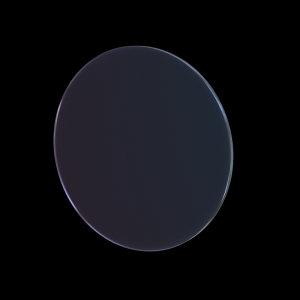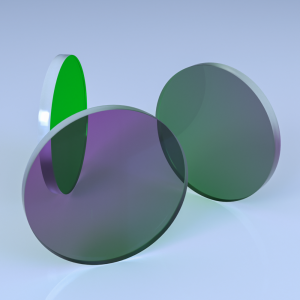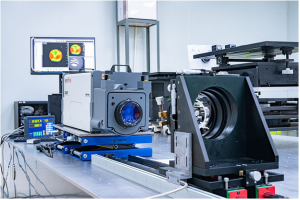optical coating are ubiquitous in our daily lives, from precision and optical equipment, display devices to optical thin film applications in daily life; For example, the glasses, digital cameras, various household appliances, or anti-counterfeiting technology used on banknotes can all be referred to as an extension of the application of optical thin film technology. Without optical thin film technology as the foundation for development, modern optoelectronics, communication, or laser technology will not be able to make progress, which also demonstrates the importance of research and development in optical thin film technology. Now I bring you the application principle of optical coating.
1、 Definition of optical thin films
The definition of optical thin film is a thin and uniform dielectric film layer that adheres to the surface of optical devices during the propagation path of light. Through the reflection, transmission (refraction), and polarization characteristics of the layered dielectric film layer, we aim to achieve various special forms of light, such as full transmission of light or full reflection or polarization separation of light within a certain or multiple band ranges.
Optical film refers to coating or coating one or more layers of dielectric film or metal film or a combination of these two types of films on optical elements or substrates to change the transmission characteristics of light waves, including transmission, reflection, absorption, scattering, polarization and phase change of light. Therefore, through appropriate design, the transmittance and reflectivity of the surface of different wavelength band components can be adjusted, and light with different polarization planes can also have different characteristics.
Generally speaking, the production methods of optical thin films are mainly divided into dry and wet production processes. The so-called dry type refers to the process where no liquid appears throughout the entire processing. For example, vacuum evaporation is carried out in a vacuum environment, where solid raw materials are heated with electrical energy, sublimated into gas, and attached to the surface of a solid substrate to complete the coating process. The gold, silver, or metallic packaging films used for decoration in daily life are products manufactured by dry coating. However, considering actual mass production, the application range of dry coating is smaller than that of wet coating. The general practice of wet coating is to mix various functional components into a liquid coating, apply it to the substrate in different processing methods, and then dry and solidify the liquid coating to make the product.

2、 Principle of Thin Film Interference
1. In the 1860s, American physicist Maxwell developed electromagnetic theory, pointing out that light is an electromagnetic wave, which led to the development of wave theory to a quite perfect level.
From the wave particle duality of light, it can be seen that light, like radio waves and X-rays, is an electromagnetic wave, but their frequencies are different. Wavelength of electromagnetic waves λ、 The relationship between frequency u and propagation rate V is: V= λ Due to the equal propagation speed of electromagnetic waves of various frequencies in vacuum, the wavelengths of electromagnetic waves with different frequencies also differ. Wavelengths with higher frequencies are shorter, while wavelengths with lower frequencies are longer. In order to facilitate comparison, they can be arranged into a spectrum according to the wavelength (or frequency) of radio wave, infrared ray, visible light, ultraviolet ray, X-ray and gamma ray. This spectrum is called electromagnetic spectrum.
In the electromagnetic spectrum, the longer wavelength is radio wave, which can be divided into long wave, medium wave, short wave, ultra short wave and microwave due to different wavelengths. Next are infrared, visible, and ultraviolet rays, collectively known as light radiation. Among all electromagnetic waves, only visible light can be seen by the human eye. The wavelength of visible light is about 0.76 μ m to 0.40 μ m, which only accounts for a small part of the electromagnetic spectrum. Again, there are X-rays. Electromagnetic waves with shorter wavelengths are y-rays. Since light is an electromagnetic wave, its characteristics – interference, diffraction, polarization, and other phenomena – should be reflected during its propagation.
2. The thin film interference film can be a transparent solid, liquid, or a thin layer of gas sandwiched between two pieces of glass. The first beam of light is obtained after the incident light is reflected on the upper surface of the film, and the refracted light is reflected on the lower surface of the film, and then refracted on the upper surface to obtain the second beam of light. These two beams of light are on the same side of the film, separated by the same incident vibration, and are coherent light, belonging to amplitude division interference. If the light source is an extended light source (surface light source), interference can only be observed in the specific overlapping area of two coherent beams, so it belongs to localized interference. For a planar thin film with two parallel surfaces, the interference fringes are localized at infinity and are usually observed within its focal plane using a converging lens; For wedge-shaped thin films, the interference fringes are localized near the film.
Both experiments and theory have shown that interference fringes can only be generated when two rows of light waves have a certain relationship, which is called the coherence condition. The coherence conditions of thin films include three points: the frequency of two light waves is the same; The vibration direction of the beam wave is the same; The phase difference between the two light waves remains constant. The formula for the optical path difference of thin film interference with two-phase dry light is: Δ= ntcos( α) ± λ/ In equation 2, n is the refractive index of the thin film; T is the film thickness at the incident point; α Is the refractive angle inside the film; λ/ 2 is the additional optical path difference caused by the reflection of two coherent beams of light at two interfaces with different properties (one is from the optical sparse medium to the optical dense medium, and the other is from the optical dense medium to the optical sparse medium). The principle of thin film interference is widely used in the inspection of optical surfaces, precise measurement of small angles or lines, and the preparation of anti reflection films and interference filters.
Light is radiated by the change of the motion state of atoms or molecules in the light source. Every time each atom or molecule emits light waves, there is only one short column, and the duration is about 1 billion seconds. For two light sources, the three conditions for interference are difficult to meet. The condition that the phase is the same or the phase difference is constant in special city is not easy to meet. Therefore, two general light sources cannot constitute coherent light sources. Moreover, even the light emitted by different parts of the same light source, as they are emitted by different atoms or molecules, generally does not interfere.




